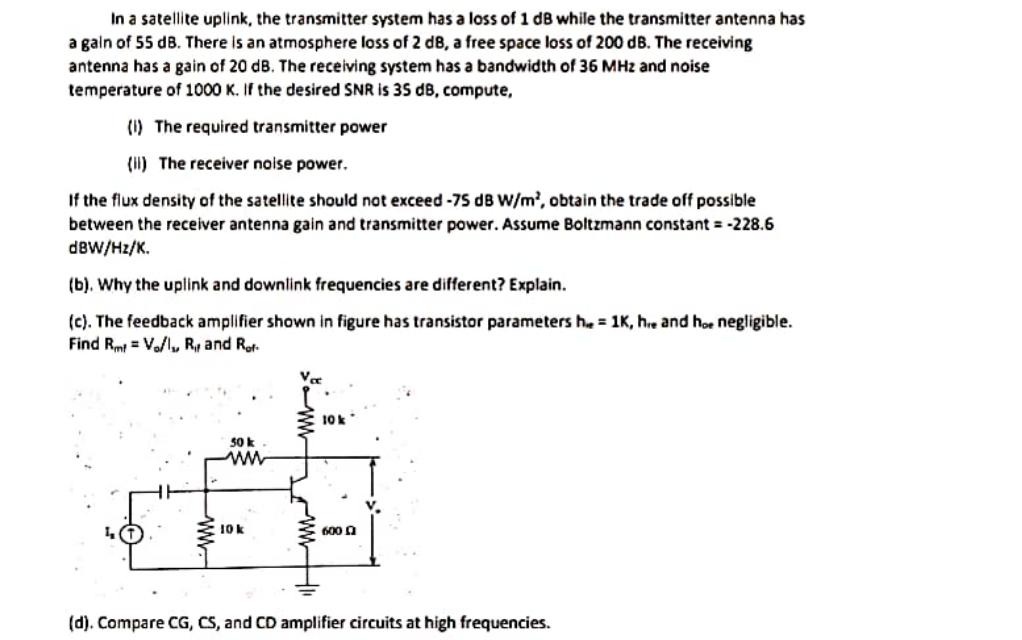Answered step by step
Verified Expert Solution
Question
1 Approved Answer
In a satellite uplink, the transmitter system has a loss of 1 dB while the transmitter antenna has a gain of 55 dB. There

In a satellite uplink, the transmitter system has a loss of 1 dB while the transmitter antenna has a gain of 55 dB. There is an atmosphere loss of 2 d8, a free space loss of 200 dB. The receiving antenna has a gain of 20 dB. The receiving system has a bandwidth of 36 MHz and noise temperature of 1000 K. If the desired SNR is 35 dB, compute, (1) The required transmitter power (i) The receiver noise power. If the flux density of the satellite should not exceed -75 dB W/m, obtain the trade off possible between the receiver antenna gain and transmitter power. Assume Boltzmann constant = -228.6 dBW/Hz/K. (b). Why the uplink and downlink frequencies are different? Explain. (c). The feedback amplifier shown in figure has transistor parameters he=1K, he and hoe negligible. Find Rmt = Vo/l, R and Rot 50 k www 10 k 10k 600 (d). Compare CG, CS, and CD amplifier circuits at high frequencies.
Step by Step Solution
★★★★★
3.41 Rating (145 Votes )
There are 3 Steps involved in it
Step: 1
The detailed ...
Get Instant Access to Expert-Tailored Solutions
See step-by-step solutions with expert insights and AI powered tools for academic success
Step: 2

Step: 3

Ace Your Homework with AI
Get the answers you need in no time with our AI-driven, step-by-step assistance
Get Started


